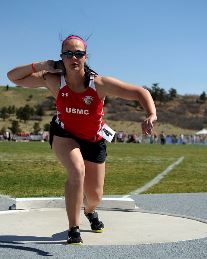Not known Factual Statements About 4throws
Not known Factual Statements About 4throws
Blog Article
Not known Factual Statements About 4throws
Table of ContentsWhat Does 4throws Do?The Best Guide To 4throwsIndicators on 4throws You Should KnowAbout 4throws4throws Fundamentals Explained
Otherwise, the young bottles might be more probable to have elbow joint and shoulder injuries. It prevails for a coach to "obtain" a pitcher when the maximum variety of pitches has been thrown or if the game scenario asks for a modification. If the pitcher remains to play in that game, he needs to be positioned at shortstop or third base where long hard tosses are needed on a currently worn out arm.This mix causes a lot of tosses and raises their threat of injury - Javelins. The best location is relocating to second or first base where the throws are much shorter and much less anxiety is put on the arm. It is likewise important to recognize for how long to rest young bottles in order to enable the best recovery in between trips
Bottles ought to additionally ice their shoulders and joints for 20 mins after throwing to advertise healing. Some players might play on even more than one group in a period. This warrants close attention to correct rest. Body and arm fatigue adjustment mechanics and lead to injury. When playing on multiple groups, think about pitching on just one and playing a field setting on the other (not catcher).
Any person can toss a round "over-hand," yet not everyone can do it well. While tossing a sphere appears basic, it is actually a complicated collection of movements. Shot put.
The Facts About 4throws Revealed

(https://4throwssale.bandcamp.com/album/4throws)The shoulder joint is made up of 3 bones, scapulae, clavicle and humerus. The head of the humerus relaxes on the Glenoid fossa of the scapula where it expresses when the muscular tissues of the shoulder agreement to relocate the arm. The head is held "against" the glenoid surface using the four Rotator Cuff (RTC) muscles, which act together and develop a pressure couple when the arm is moved.
The more the shoulder can be on the surface turned while it is abducted, the better the round can be thrown with force and rate, supplying all other body parts and movements are in synch. If any kind of element of these auto mechanics is "off," an injury can occur to the shoulder or elbow that can lead to the failure to throw a round.
It is the start of the throwing motion, preparing the "body components" for the act of throwing a ball. Movement happens in the lower extremities and upper body where the large majority of "power" to toss a round is generated. Track and Field equipment. In this stage, the shoulder musculature is minimally energetic. This phase prepares the arm to be able to toss the sphere.
How 4throws can Save You Time, Stress, and Money.
This shoulder placement places the anterior upper quadrant musculature on a "stretch" and prepares it to contract vigorously when the arm begins to relocate onward in the following stage of the tossing motion. The body starts to move on in the direction of its target throughout this phase. The lead shoulder is directed at the target and the throwing arm continues to relocate right into severe external rotation.

When the ball is released, the posterior quadrant musculature begins to acquire eccentrically and violently to decrease and manage the rotational rate of the Humeral head. In concept, if the eccentric control of the Humeral head did not occur the arm would remain to rotate inside and "rotate" uncontrollable.
4throws for Dummies
The last stage of throwing is the follow-through. This phase reduces down all body movements and quits the forward movement of the body.
Throwing a round "over-hand" involves motion in all components of the body. If the mechanics are performed appropriately, the ball can be thrown with great velocity and accuracy. If the body is trained appropriately, the act of throwing can be executed over and over again without creating an injury to the throwing shoulder.

Paul Whatley, M.D. "When I was a youngster, baseball was just in the springtime and very early summer, so youngsters had lots of time to recoup from any kind of issues connected to repetitive motions and anxiety," he claims. "Currently, in order to stay up to date with everyone else, there is intense stress for gamers to go from the spring period directly into summertime 'All-Star' competitions and showcases, complied with by 'Autumn Ball.' Resources Consequently, there can be very little time for the body to recover from a sport where repetition is the essential to developing the muscle mass memory for success.
Rumored Buzz on 4throws
When this activity is executed over and over at a high price of rate, it puts considerable stress on the development areas of the elbow and the physiological framework of the shoulder, especially in the late cocking and follow-through phases. Due to this, some of one of the most typical injuries seen in baseball players affect the shoulder and joint.
Report this page